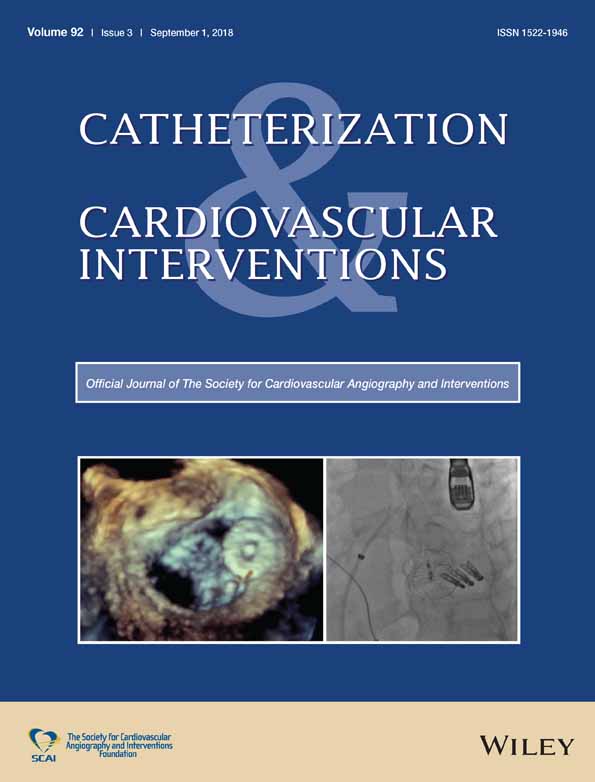Transcatheter pledget-assisted suture tricuspid annuloplasty (PASTA) to create a double-orifice valve
Funding information: Division of Intramural Research, NHLBI, NIH; Grant/Award Numbers: Z01-HL006040 and Z01-HL006039
Abstract
Objectives
Pledget-assisted suture tricuspid valve annuloplasty (PASTA) is a novel technique using marketed equipment to deliver percutaneous trans-annular sutures to create a double-orifice tricuspid valve.
Background
Tricuspid regurgitation is a malignant disease with high surgical mortality and no commercially available transcatheter solution in the US.
Methods
Two iterations of PASTA were tested using trans-apical or trans-jugular access in swine. Catheters directed paired coronary guidewires to septal and lateral targets on the tricuspid annulus under fluoroscopic and echocardiographic guidance. Guidewires were electrified to traverse the annular targets and exchanged for pledgeted sutures. The sutures were drawn together and knotted, apposing septal and lateral targets, creating a double orifice tricuspid valve.
Results
Twenty-two pigs underwent PASTA. Annular and chamber dimensions were reduced (annular area, 10.1 ± 0.8 cm2 to 3.8 ± 1.5 cm2 (naïve) and 13.1 ± 1.5 cm2 to 6.2 ± 1.0 cm2 (diseased); septal-lateral diameter, 3.9 ± 0.3 mm to 1.4 ± 0.6 mm (naïve) and 4.4 ± 0.4 mm to 1.7 ± 1.0 mm (diseased); and right ventricular end-diastolic volume, 94 ± 13 ml to 85 ± 14 ml (naïve) and 157 ± 25 ml to 143 ± 20 ml (diseased)). MRI derived tricuspid regurgitation fraction fell from 32 ± 12% to 4 ± 5%. Results were sustained at 30 days. Pledget pull-through force was five-fold higher (40.6 ± 11.7N vs 8.0 ± 2.6N, P < .01) using this strategy compared to single puncture techniques used to anchor current investigational devices. Serious complications were related to apical access.
Conclusions
PASTA reduces annular dimensions and tricuspid regurgitation in pigs. It may be cautiously applied to selected patients with severe tricuspid regurgitation and no options. This is the first transcatheter procedure, to our knowledge, to deliver standard pledgeted sutures to repair cardiac pathology.
CONFLICT OF INTERESTS
ABG serves as a proctor for Edwards Lifesciences and St Jude Medical, which manufacture transcatheter heart valves.
VCB is a consultant for Edwards Lifesciences and for Abbott Vascular, and his employer has research contracts for multicenter investigation of transcatheter aortic and mitral devices from Edwards Lifesciences, Abbott Vascular, Medtronic, St Jude Medical, and Boston Scientific.
No other author has a financial conflict of interest related to this research.




